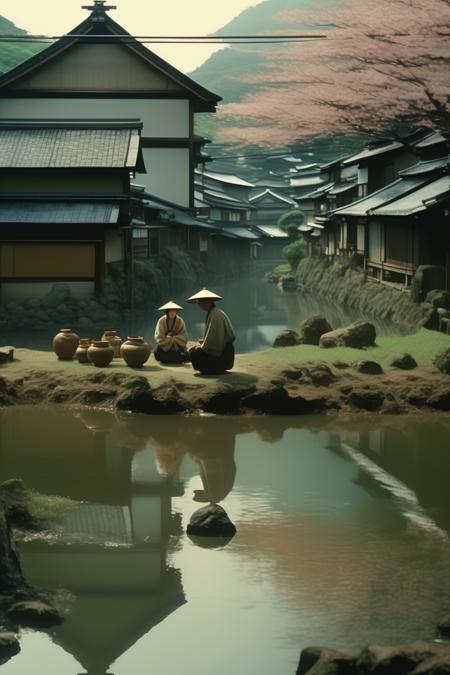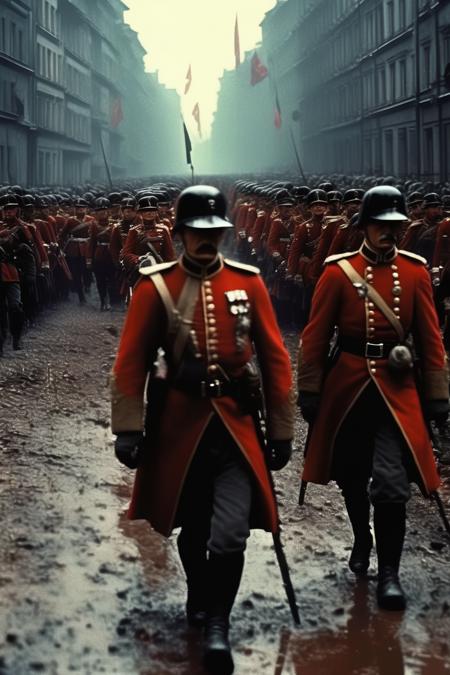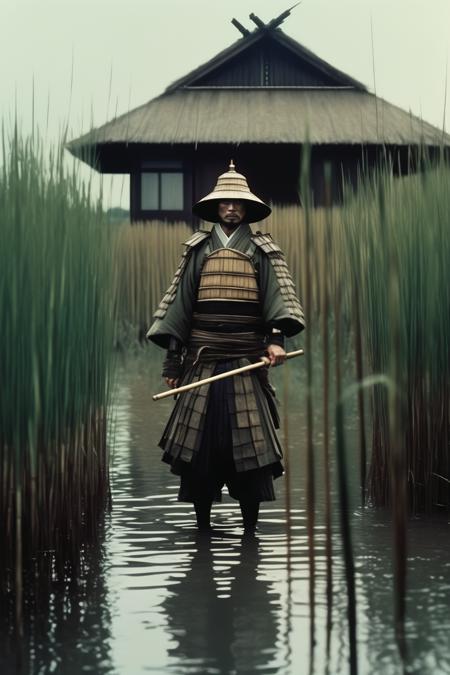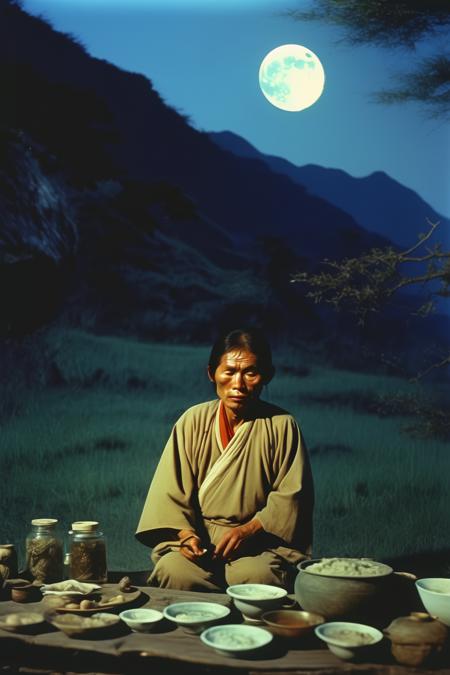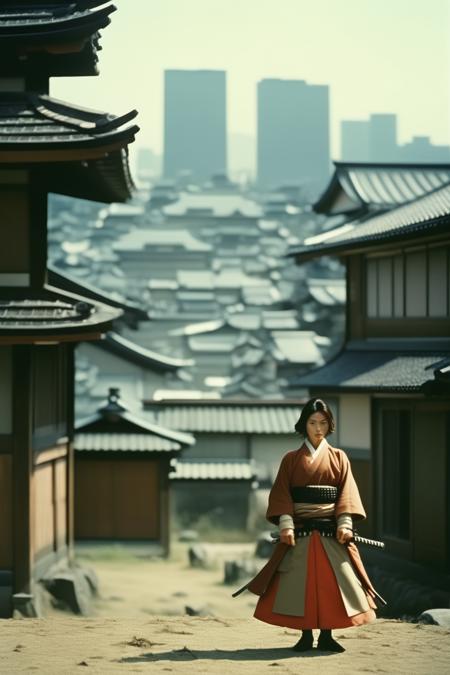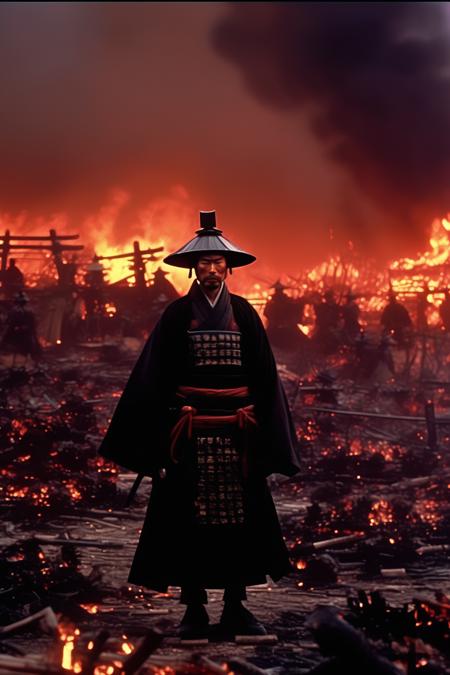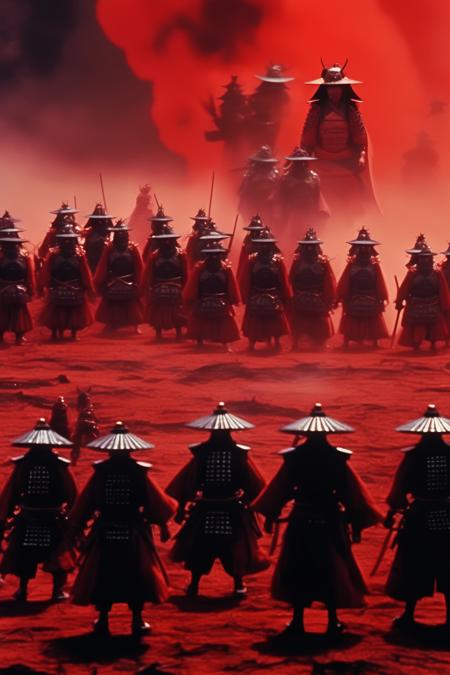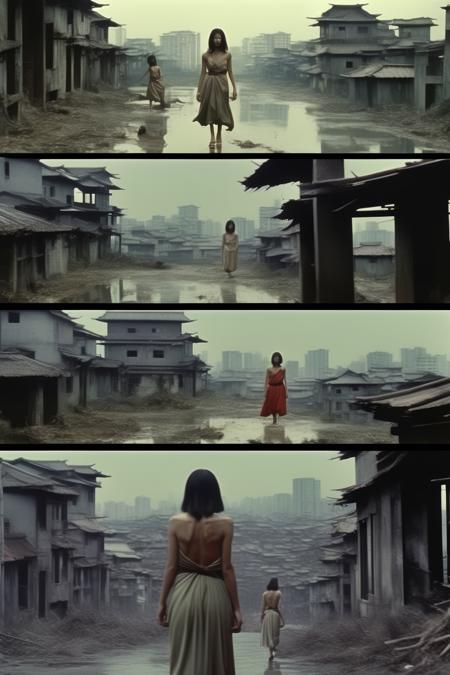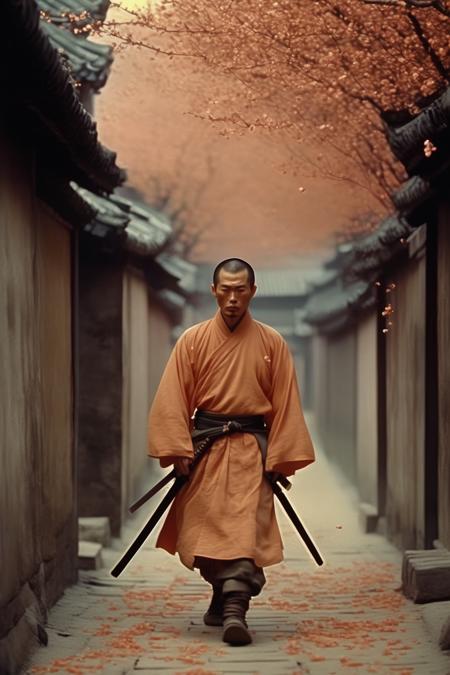Director Akira Kurosawa style
Director Akira Kurosawa style - Imagine a photorealistic still from a hypothetical film, depicting a quiet scene of contemplation in a rural Japanese village, captured in crisp 8K resolution through anamorphic Leica cine lenses. The medium should reflect the hyperrealism of modern digital cinematography, heighteneda subtle film grain that evokes the nostalgic texture of classic cinema. This frame captures the protagonist, a wise old farmer, sittinga serene pond as cherry blossoms fall gently around him. The style should mimic Kurosawa's affinity for breathtaking natural scenery and emotional subtlety, with a color palette inspiredthe soft pastels and earth tones of traditional Japanese watercolors. The lighting should be soft and diffused, with the late afternoon sun casting a warm, golden hue over the scene. The composition should utilize a high-angle shot, creating a sense of tranquil isolation, with the farmer framed against the calming tableau of the pond and cherry blossom trees.
Akira Kurosawa was a Japanese film director known for his distinctive style characterized by powerful storytelling, innovative cinematography, and a blend of Eastern and Western influences.
Kurosawa's films often feature complex characters grappling with moral dilemmas and existential themes. His storytelling is marked by strong narrative structure and dynamic pacing, engaging audiences through both emotional depth and intellectual exploration.
Cinematographically, Kurosawa was a master of visual storytelling. He employed techniques like deep focus, dramatic framing, and sweeping camera movements to create visually striking compositions that conveyed both the emotional and thematic layers of his stories.
His use of nature as a backdrop and a metaphor was a recurring theme in his films. Wide landscapes and natural elements often served as reflections of characters' inner conflicts, providing a visual context for their emotional journeys.
Kurosawa's films frequently explore the samurai ethos and the clash between tradition and modernity. His iconic samurai epics like "Seven Samurai" and "Yojimbo" not only redefined the genre but also examined timeless human values and the impact of societal change.
In addition to samurai epics, Kurosawa's filmography includes a diverse range of genres, from crime dramas like "High and Low" to Shakespearean adaptations like "Throne of Blood" and "Ran." This versatility demonstrated his mastery in tackling different subjects and styles.
Kurosawa's collaborations with actor Toshiro Mifune were particularly notable. Mifune's intense performances complemented Kurosawa's characters, often resulting in iconic on-screen partnerships that brought emotional resonance to the stories.
Overall, Akira Kurosawa's style is a fusion of compelling storytelling, captivating visuals, and a deep exploration of human nature. His influence on cinema is immense, inspiring filmmakers worldwide and earning him a place as one of the most significant directors in film history.
Image examples for the model:
Director Akira Kurosawa style - Caught in the sweep of an anamorphic lens, the Prussian army advances through the harsh reality of the Franco-Prussian War, under the guidance of cinematic vision. The starkness and relentless motion of the scene is forever encapsulated on Kodak Vision3 Color Negative Film. Under the indifferent eye of natural, high contrast lighting, soldiers move in a disciplined formation. Their mud-splattered uniforms, weary faces, and steely resolve embody the austere mood of this moment. The desaturated palette, punctuatedsudden pops of color, further intensifies the scene. We are drawn into the march of the Prussian army, their faces a reflection of the war's toll, yet unyielding in their determination. Each frame is a testament to the human spirit under the direst of circumstances, painting an uncompromising picture of a nation in the throes of conflict.
Director Akira Kurosawa style - cinematic still, filmedold-school japanese style, dirty samurai with armor standing in the water next to a tiny reed hut with slated reed rooftop hidden throught a tall reed field, slightly flooded, muted colors, dark shadows, strong highlights, grainy, low angle shot, 35mm overexpose,https: cdn.discordapp.com attachments 1090348622492733582 1110373615960064041 7695_5.jpg,
Director Akira Kurosawa style - a lonely woman fight of armored samurai, armed, in an 1860s japan, with their buildings from the time in the background, with the aesthetics of shot with a Hasselblad 500C M, Kodak Ektachrome 100 film, 80mm lens, soft natural light, and a mellow color palette to mimic the 1970's film photography aesthetic, captured natural lighting
Director Akira Kurosawa style - A cinematic scene from 1603, post-apocalyptic thriller, "Shogun's Aftermath", handheld shot, a lone samurai amidst the disarray and flames of his village, wreckage and casualties all around him, capturedroaming camera, film directedagonizing, low-light dusk setting with fire illuminating the scene
Director Akira Kurosawa style - townsfolk confrontation scene. A samurai wearing advanced materials, titanium, gomd and carbon geometrical armor in the foreground confronting a line of 7 townsfolk in the background. Intense air. Red spores suspended in tbe air. lava glow. Post apocalyptic. Cinematic. Dust blowing in the wind.
Director Akira Kurosawa style - Japan, Tokyo, Tokyo Tower, 1960s, black and white, cityscape, empty background, sunlight, a man in the distance, dressed as a samurai in traditional Japanese clothing, holding a single sword, with long hair, portraying covered in scars, wearing straw sandals,
- Downloads last month
- 10
Model tree for KappaNeuro/director-akira-kurosawa-style
Base model
stabilityai/stable-diffusion-xl-base-1.0